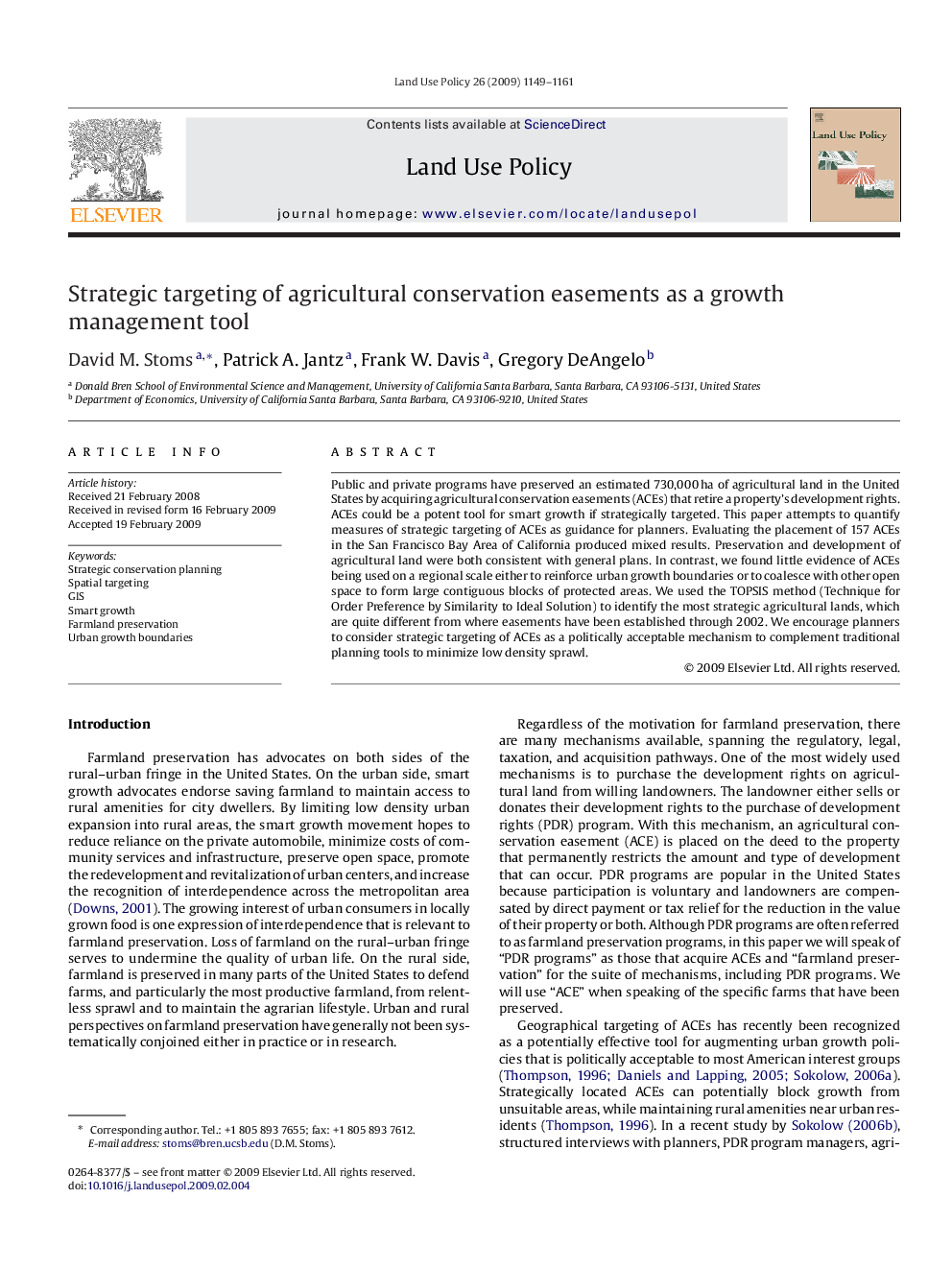| Article ID | Journal | Published Year | Pages | File Type |
|---|---|---|---|---|
| 93648 | Land Use Policy | 2009 | 13 Pages |
Public and private programs have preserved an estimated 730,000 ha of agricultural land in the United States by acquiring agricultural conservation easements (ACEs) that retire a property's development rights. ACEs could be a potent tool for smart growth if strategically targeted. This paper attempts to quantify measures of strategic targeting of ACEs as guidance for planners. Evaluating the placement of 157 ACEs in the San Francisco Bay Area of California produced mixed results. Preservation and development of agricultural land were both consistent with general plans. In contrast, we found little evidence of ACEs being used on a regional scale either to reinforce urban growth boundaries or to coalesce with other open space to form large contiguous blocks of protected areas. We used the TOPSIS method (Technique for Order Preference by Similarity to Ideal Solution) to identify the most strategic agricultural lands, which are quite different from where easements have been established through 2002. We encourage planners to consider strategic targeting of ACEs as a politically acceptable mechanism to complement traditional planning tools to minimize low density sprawl.
